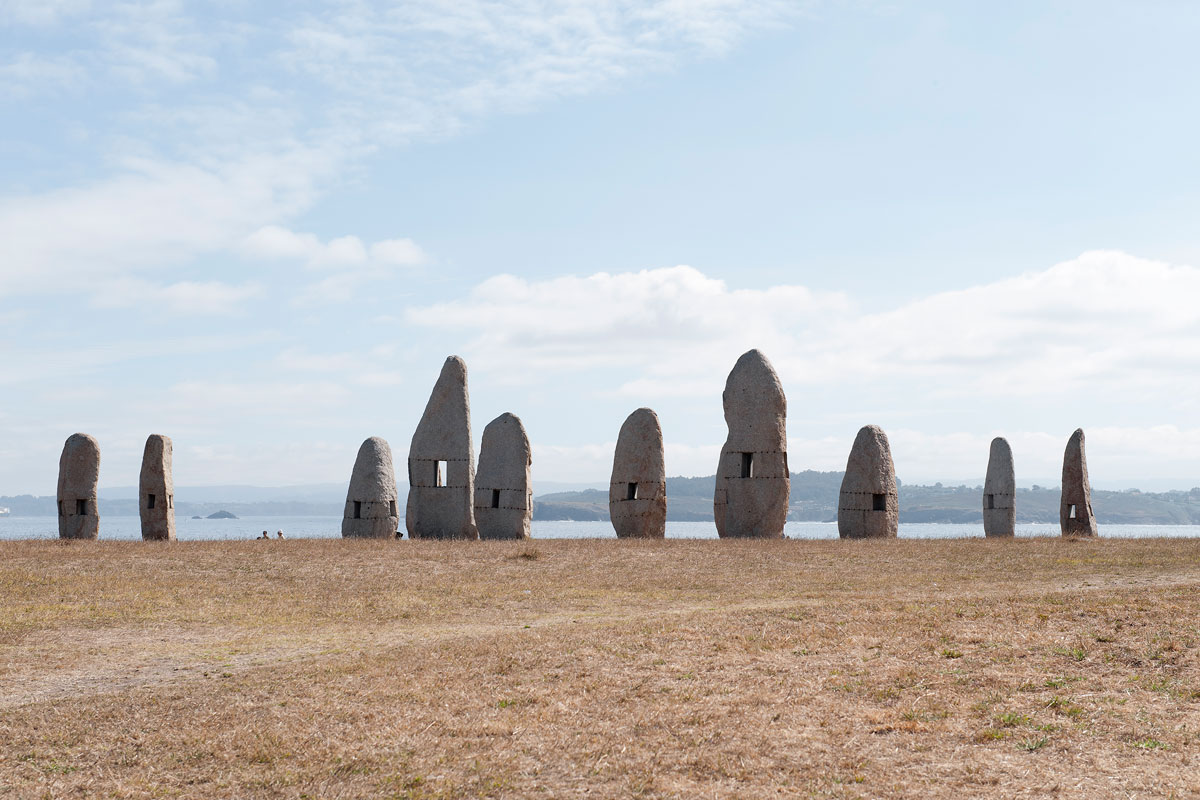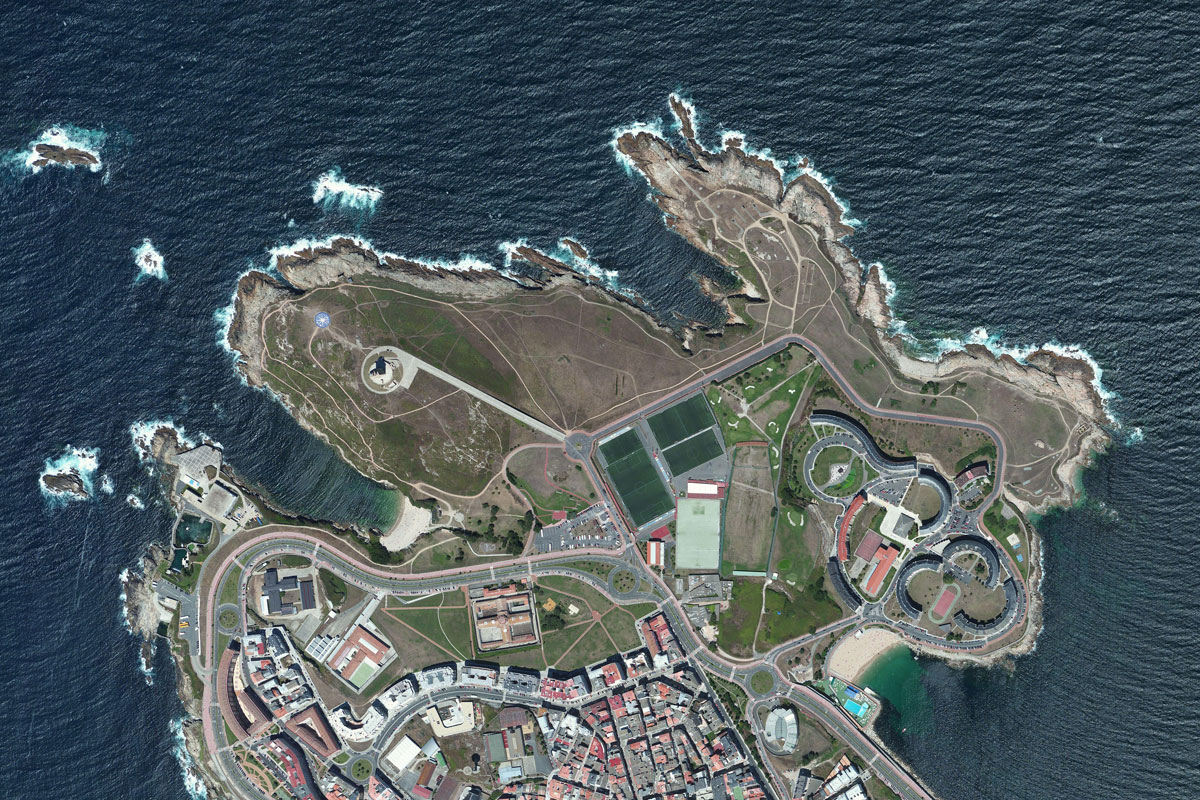Surroundings
The area surrounding the Tower of Hercules is a flat bluff 47 hectares in size, traversed by a series of sign-marked trails. This land is bounded by beaches and cliffs swept by the Atlantic Ocean. This extensive natural space near the heart of the city serves as a recreation area for visitors, with the assemblage of artistic works that make up the Sculpture Park also distributed across the land. The earliest artistic offerings, however, date from the Iron Age and are petroglyphs associated with the archaeological deposits at Monte de Bicos on Punta Herminia. These inscribed geometric shapes and symbols are distributed along the rocks seemingly at random.
The modern works of sculpture, however, can be grouped into themes:
- Mythological, where the figure of Hercules plays a starring role in works such as Las puertas de Hércules [The Gates of Hercules], Hércules, Combate entre Hércules y Gerión [Hercules: Battle between Hercules and Geryon], and Copa do Sol [The Golden Cup].
- Maritime, which allude to the sea and to navigation, such as Rosa de los vientos [The Compass Rose], Espinoso [Danger], and Caracola [The Conch].
- Historical, with the Cementerio Moro [Moorish Cemetery] and Monumento a los fusilados [Monument to the Executed], for example. The former, constructed during the Civil War, contains the tombs of Muslim soldiers. In recent years it has been converted into the La Casa de Palabras [The House of Words], to symbolize dialog between civilizations. The latter is a work created by Isaac Díaz Pardo and is located on the grassy field known as Campo da Rata, where Franco’s firing squads carried out numerous executions.





